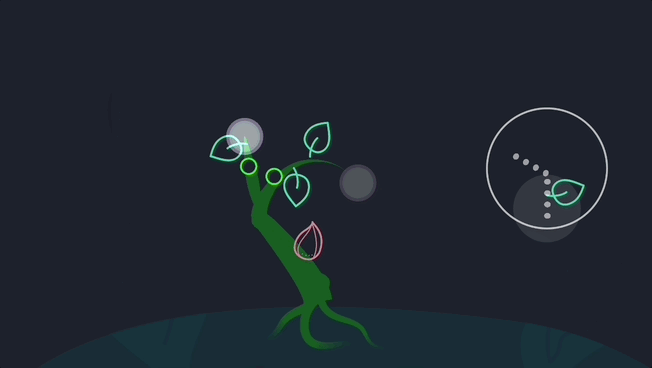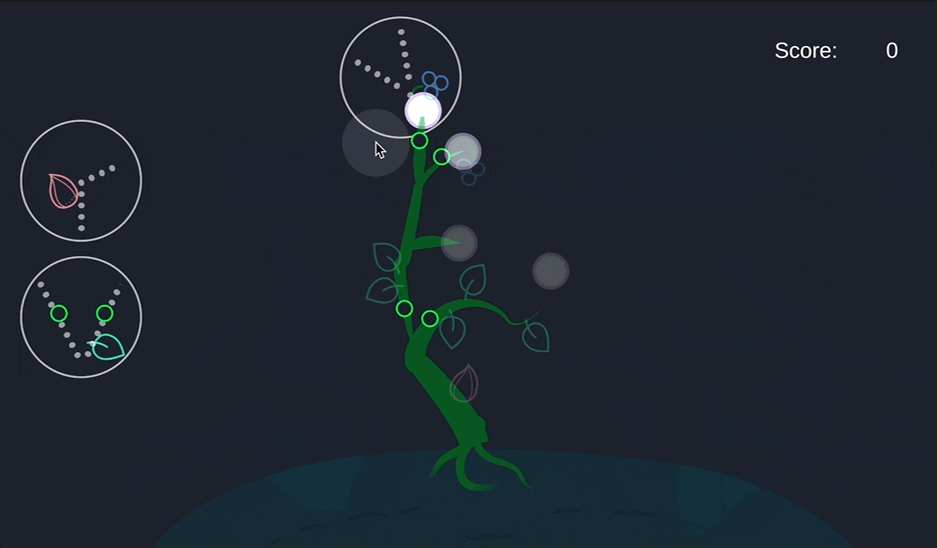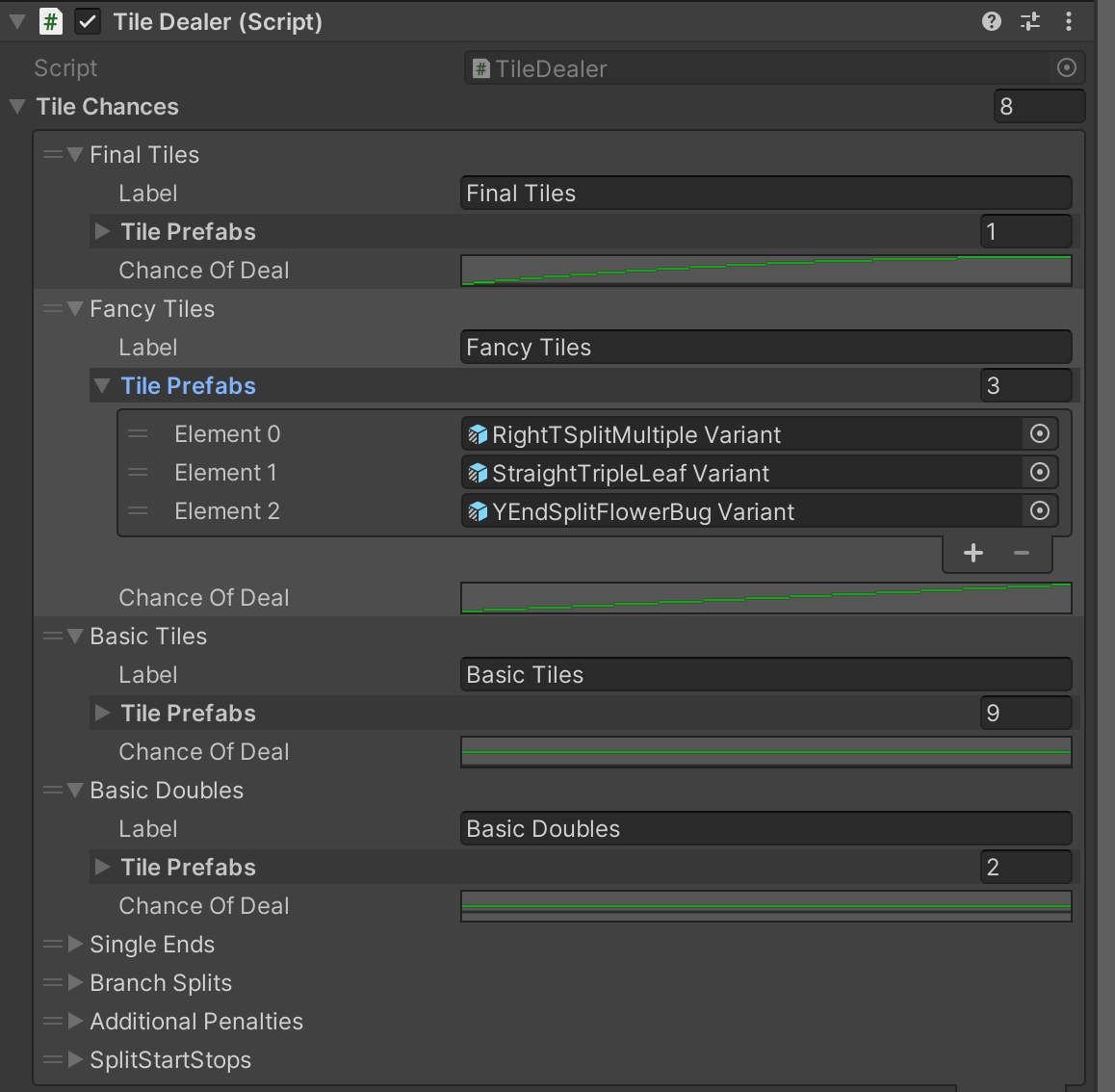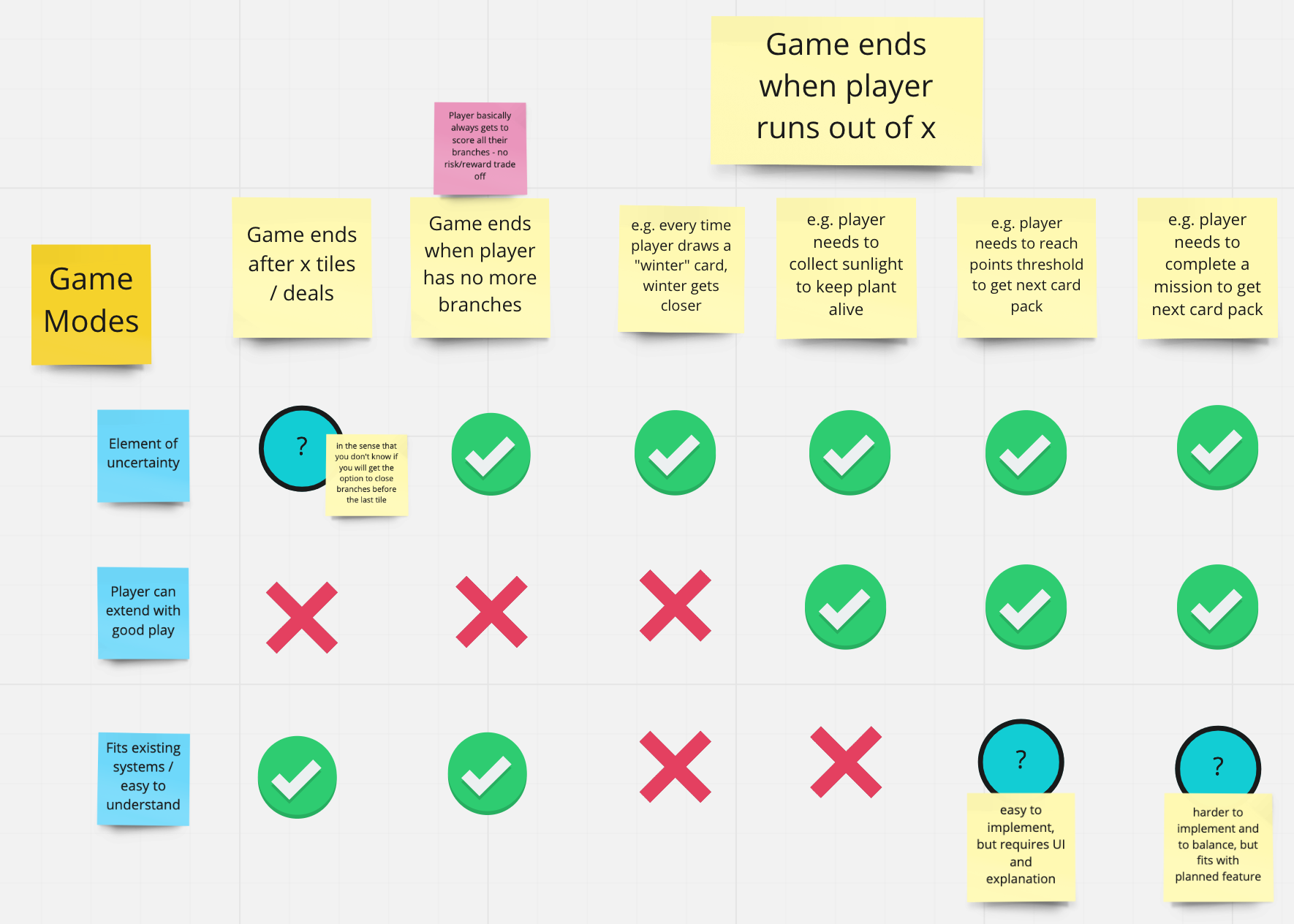Getting to gameplay
Implementing gameplay
My goal this week was to get to a version of the game that I could put in front of people for feedback - and I'm not too far off.
This meant doing a lot of odds and ends for the game to make at least a little bit of sense to fresh eyes:
- Highlight / dimming objects as you place a tile on a segment
- A sequence of rudimentary tutorial steps that whizz you through the mechanics and object types
- Improved camera that zooms out as you play
- Some audio and animation to help with the UX
Object dimming:

Camera zooming:

I also finished implementing features like the sun spawner, which allows flowers to bloom and be scored.
But mainly, it meant I needed to get the flow of the gameplay from start to finish, i.e. the system for dealing tile and determining when the game is over.
I kept the tile system pretty simple - it allows me to create groups of cards, then input the chance of picking one of the tiles from that group over the course of the game using an animation curve. The curve is evaluated between 0 and whatever I input as the maximum number of deals.

I felt this would give me a good level of flexibility to play with how I group tiles and to bring new variants of tiles into a group without affecting the overall chances of that group being picked. Within each group I have the lazy option of adding a prefab more than once to the list if I want to fine tune it a little more.
Win states and game modes
In particular I wanted this control so that I could gently bring the game to a finish - currently, the game will start dealing out “finishing tiles” (i.e. tiles that complete a segment and do not start a new one) and the game comes to a natural but not entirely predictable conclusion when you have no open branches left.
Whilst it's a nice flow, it does miss something I think is quite vital: the player knows they will always be able to finish every branch. Therefore there isn’t much risk in creating huge branches with many leaves (which would lead to a massive score) - the only small risk is if you end up having to finish it with a bug, which would destroy all the leaves. I think there needs to be a much higher risk.
So, what should the game mode be? I jotted down a few options:

At the moment, I’m still weighing up which routes to try out, but I think I should first get some initial feedback. I am interested in the missions idea, as it was part of the paper prototype, but I'm also unsure about whether these are a core feature or whether I'd just be adding complexity on top of a weak base.
I'm aiming to get a build up on itch today, so you can play for yourself and let me know what you think!
My observations so far
Free movement and placement
I opted for free placement over grids and tiles to have more of an organic feel, but it would 100% need a more thorough thinking through and finessing to work well. Currently it’s up to the player to not make such a mess that they can’t see what’s going on, but of course ideally they wouldn’t be able to overlap vines and objects in this way.
The only restriction I have implemented stops the player from placing vines going into the ground, as this breaks my camera zoom code. When the player does this, the vine simply closes itself off. I could potentially add something similar when players run vines into each other, but I have a hunch it would break the balance of needing those segment-closing tiles to claim your score.
Visual noise
In general, the visual style doesn’t read well once there are many objects, or once the camera has zoomed out a certain amount (which can currently happen infinitely!). I’d reevaluate the use of line art for this reason.
Arbitrariness of rules
A piece of advice I got recently was that the best way to keep things simple and intuitive in this type of game is to keep to the real-life metaphor, and not break it with arbitrary rules. That's not what I've got here.
To me this game feels like a board game, with rules that you have to simple remember, rather than gameplay you can intuit. Looking at how it compares to some of my inspiration games: it has more, less intuitive rules to remember that Dorfromantik, but requires less information retention than Islanders. I think if the objects were introduced carefully enough, it wouldn’t feel too overwhelming, but it certainly doesn’t hit the gold standard of an intuitive system.
Plant Game Prototypes
| Status | Prototype |
| Author | Kate Killick |
More posts
- Mechanics iterationsFeb 08, 2022
- Digital Tiles PrototypeJan 30, 2022
- Tile Placement VersionJan 30, 2022
- Plant SimulatorJan 30, 2022
- Sim/Strategy Game AnalysisJan 23, 2022
Leave a comment
Log in with itch.io to leave a comment.